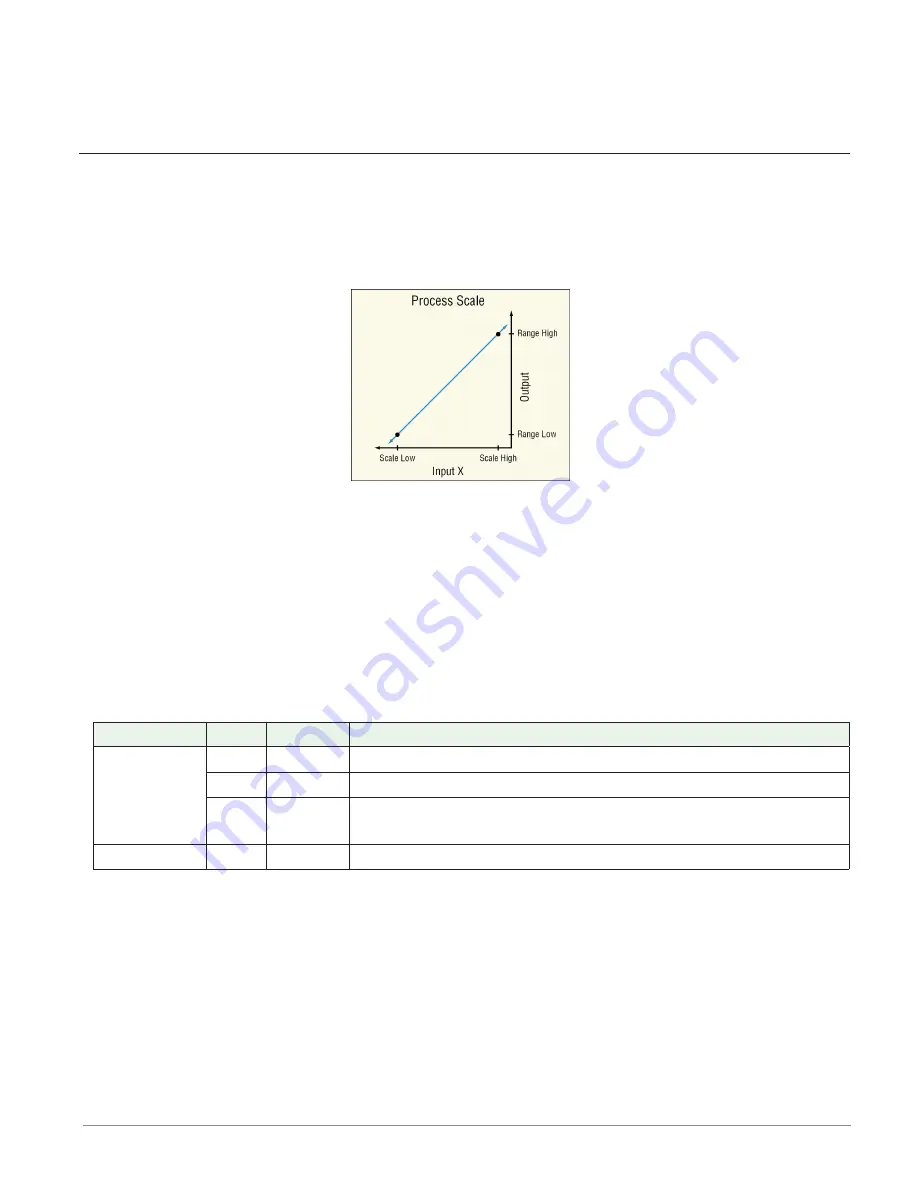
Watlow D4T Data Logger
•
100
•
Chapter 5 Function Reference
Filter
Set the amount of filtering to apply. Filtering smooths signal fluctuations. Increase the time to
increase filtering. Excessive filtering slows the function’s response.
Range: 0.0 to 60.0 seconds
Process Scale
When SW is off, the output equals the filtered, scaled value of input X plus the offset. When
SW is on, the output equals the filtered value of input B plus the offset.
Scaling converts input X proportionally from the input scale to the output range according to
the line defined by the Scale Low, Scale High, Range Low and Range High settings as shown in
the illustration.
The definition of the scaling line is very flexible. The input scale is not limited by the Scale
Low and Scale High values and the range of the scaling calculation is not limited to values be-
tween Range Low and Range High. Input values are converted according to the line defined by
the two points. Scale High need not be greater than Scale Low and Range High need not be
greater than Range Low. A filter and offset may be applied to the calculated value.
Process Scale can be used, for example, to convert from one set of units to another or to con-
vert a sensor signal to engineering units if the signal is linear with the value it represents.
Signals
Direction
Label
Type
Function
Receivers
X
Analog
Signal to scale when SW is off
B
Analog
Signal used without scaling when SW is on
SW Digital
When off, the output is based on the scaled value of input
X, when on the output is based on input B (not scaled)
Transmitter - - - - Analog
The filtered result of the function plus the offset
Function
To convert an input from its scale to another range, set Function to
Process Scale
.
Scale Low
Set the value of input X at which the Range Low setting is the desired result of scaling. Scale
Low and Range Low are the coordinates of a point on the line that relates input X to the
scaled output.
Range: -99,999.000 to 99,999.000
















































